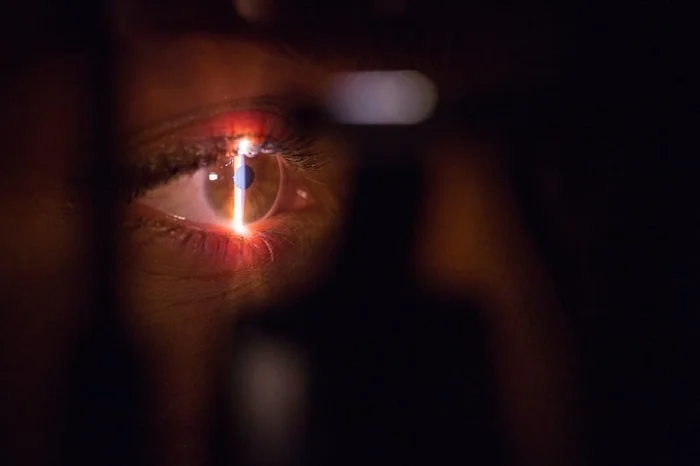Astigmatism is a common refractive error that affects many individuals worldwide. It occurs when the cornea, the clear front surface of the eye, is irregularly shaped, causing blurred or distorted vision. This condition can coexist with other refractive errors such as myopia (nearsightedness) and hyperopia (farsightedness). For those seeking a solution to their vision problems, LASIK (Laser-Assisted In Situ Keratomileusis) eye surgery has emerged as a popular option. This article explores whether LASIK can effectively treat astigmatism, the procedure’s suitability for different degrees of astigmatism, and what patients can expect before, during, and after the surgery.
Understanding Astigmatism
What is Astigmatism?
Astigmatism is characterized by an uneven curvature of the cornea or lens. In a normal eye, light rays focus on a single point on the retina, resulting in clear vision. However, in an eye with astigmatism, light rays focus on multiple points or do not focus at all, leading to blurred or distorted images. Symptoms of astigmatism may include:
- Blurred vision at all distances
- Difficulty seeing at night
- Eye strain or discomfort
- Headaches
Astigmatism can be classified into two types: regular and irregular. Regular astigmatism occurs when the principal meridians are perpendicular to each other, while irregular astigmatism involves more complex curvatures.
Causes of Astigmatism
Astigmatism can be caused by several factors:
Genetics: Family history plays a significant role in the development of astigmatism.
Eye injuries: Trauma to the eye can lead to changes in its shape.
Surgery: Previous eye surgeries may alter corneal curvature.
Keratoconus: A progressive condition where the cornea thins and bulges outward.
LASIK Eye Surgery Overview
What is LASIK?
LASIK is a type of refractive surgery that uses laser technology to reshape the cornea. The goal is to improve how light rays enter the eye and focus on the retina. This outpatient procedure typically takes about 30 minutes for both eyes and involves minimal discomfort.
How Does LASIK Work?
The LASIK procedure consists of two main steps:
Creating a Corneal Flap: A thin flap of corneal tissue is created using a microkeratome or femtosecond laser.
Reshaping the Cornea: An excimer laser is used to remove precise amounts of corneal tissue to flatten or steepen the cornea’s curvature, correcting refractive errors including astigmatism.
The flap is then repositioned, allowing for quick healing.
Benefits of LASIK
Quick Recovery: Most patients experience improved vision within a day.
Minimal Discomfort: The procedure typically involves little to no pain due to numbing drops.
Long-lasting Results: Many patients achieve 20/25 vision or better after surgery.
Can You Get LASIK Eye Surgery with Astigmatism?
Eligibility Criteria for LASIK
Not everyone with astigmatism is a suitable candidate for LASIK. The following factors are considered during the evaluation:
Degree of Astigmatism: LASIK can effectively treat mild to moderate astigmatism (up to 6 diopters). Higher degrees may require alternative treatments.
Corneal Health: The thickness and overall health of the cornea are crucial for successful surgery.
Age: Candidates should typically be over 18 years old and have stable vision for at least one year prior to surgery.
Types of Astigmatism Treated by LASIK
LASIK is primarily effective for regular astigmatism. Irregular astigmatism may require specialized procedures such as PRK (Photorefractive Keratectomy) or toric intraocular lenses.
Preoperative Assessment
Comprehensive Eye Examination
Before undergoing LASIK, patients must undergo a thorough eye examination that includes:
- Measuring refractive error
- Assessing corneal thickness
- Evaluating overall eye health
- Discussing medical history and expectations
This assessment helps determine if LASIK is appropriate and which technique will yield the best results.
Discussing Expectations
Patients should have realistic expectations regarding outcomes. While many achieve excellent vision post-surgery, some may still require glasses or contacts for specific tasks like night driving.
The LASIK Procedure
Step-by-Step Process
Preparation: Numbing drops are applied to minimize discomfort.
Flap Creation: A suction ring stabilizes the eye while creating a flap.
Reshaping: The excimer laser reshapes the cornea based on pre-measured specifications.
Flap Repositioning: The flap is carefully placed back into position.
Duration and Recovery
The entire procedure lasts about 30 minutes for both eyes. Patients often notice immediate improvement in vision but should avoid strenuous activities for at least a week post-surgery.
Postoperative Care and Expectations
Immediate Aftercare
After surgery, patients are advised to:
- Rest their eyes
- Avoid rubbing their eyes
- Use prescribed eye drops to prevent infection and dryness
Long-term Care
Regular follow-up appointments are essential to monitor healing and address any concerns. Patients should report any unusual symptoms such as persistent pain or visual disturbances.
Risks and Considerations
Potential Risks of LASIK
While LASIK is generally safe, potential risks include:
- Dry eyes
- Glare or halos around lights
- Undercorrection or overcorrection
- Infection
Discussing these risks with an ophthalmologist can help mitigate concerns.
Alternatives to LASIK
For those who may not qualify for LASIK due to high levels of astigmatism or other factors, alternatives include:
- PRK
- SMILE (Small Incision Lenticule Extraction)
- Toric contact lenses
- Traditional eyeglasses or contact lenses
Conclusion
In conclusion, LASIK eye surgery offers an effective solution for individuals with astigmatism seeking clearer vision without reliance on glasses or contact lenses. With advancements in technology and surgical techniques, many patients can achieve significant improvements in their eyesight. However, it is crucial to undergo a comprehensive evaluation by an experienced ophthalmologist to determine candidacy and discuss potential risks and benefits tailored to individual needs. As always, maintaining open communication with your healthcare provider will ensure that you make informed decisions about your eye health and vision correction options.
Related topic:
What Are the advantages and disadvantages of lasik eye surgery?
What is the youngest age to get lasik eye surgery?
Do You Have To Be Awake For Laser Eye Surgery?

